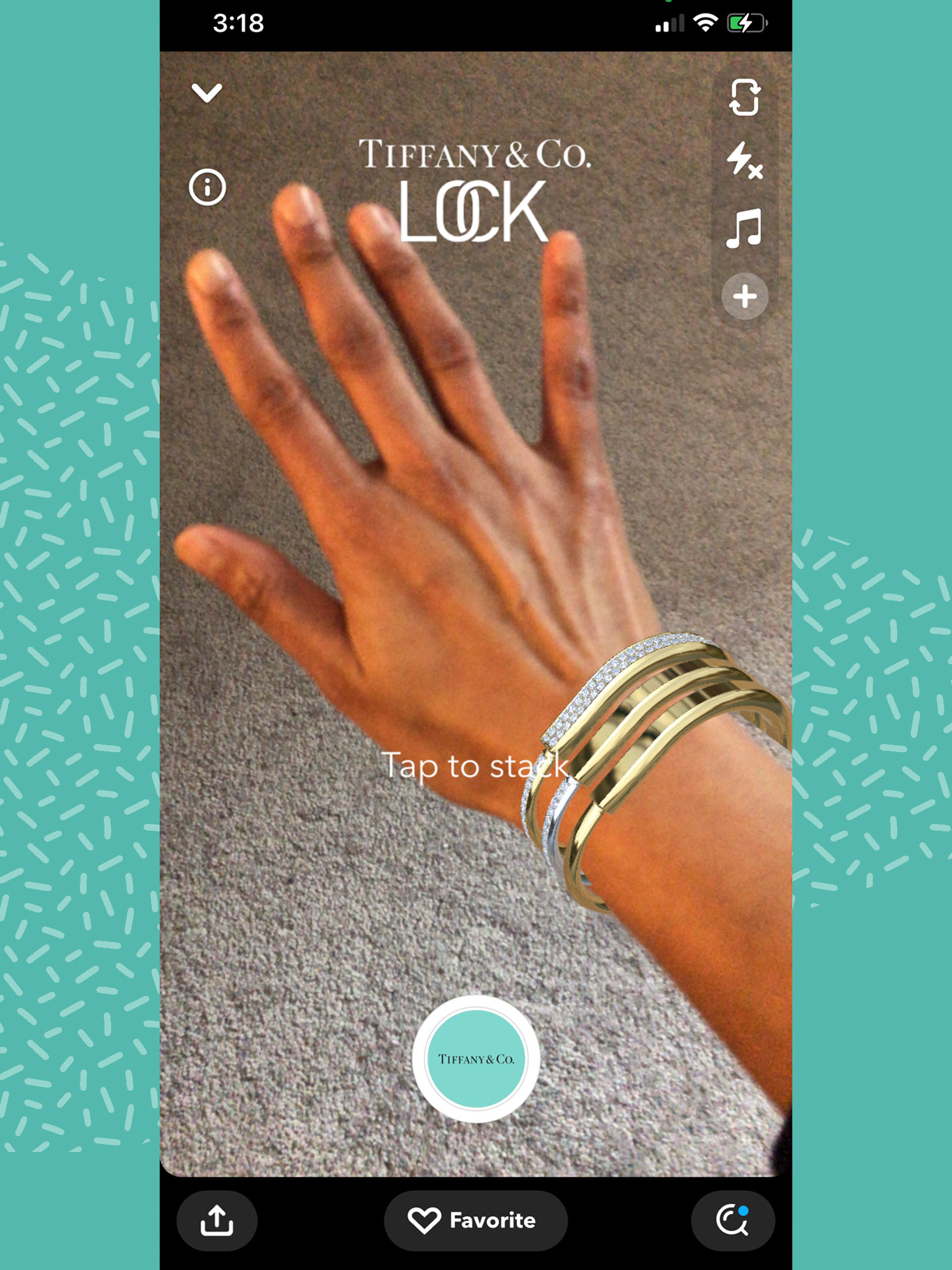Cartier and Tiffany are getting into AR to sell luxury to Gen Z
These collaborations aren’t the first of their kind, but signal luxury brands want a new crop of customers.

I recently tried on a Cartier Tank watch and a slew of Tiffany bracelets, watching the metal and diamonds shine in the dim light. I wasn’t at a store, though; I was in my bed, barefoot and in sweatpants, using an AR experience on Snap that let me see how the jewelry looked on my wrist.
The Cartier and Tiffany AR campaigns are the latest in a series of collaborations Snap is making with brands to get Gen Z to invest in luxury using virtual try-on experiences. (The Cartier Tank watch starts at $2,790; the cheapest Tiffany Lock bracelet is priced at $6,900.)
Tiffany and Cartier are not the first brands to team up with Snap’s AR. Louis Vuitton just partnered with the artist Yayoi Kusama to create a filter on Snap that envelops landmarks around the world in Kusama’s trademark polka dots. Snap has already collaborated with Dior, Gucci, and Prada using virtual try-on technology.
"Brands are tapping into Snapchat’s largely Gen Z community to make the world a bit more interactive and a bit more fun,” says Geoffrey Perez, head of luxury at Snap.
The Cartier Tank watch experience uses an augmented reality filter to transport the user to the Pont Alexandre III bridge in Paris. The virtual experience lets you see four iterations of the watch from different periods over the past 106 years, and then look around the bridge and at fellow pedestrians to get a sense of that era.
Tiffany, meanwhile, uses ray tracing technology, a technology from video games, which captures the movement of light on AR objects more realistically. For a jewelry company, it means that the unique sparkle of metal and diamonds can be translated into AR. Neither Cartier nor Tiffany returned requests for comment.
Ziyou Jiang, a doctoral candidate at the University of Georgia, presented a paper at a clothing conference last year on how AR influences Gen Z. Jiang surveyed 134 people this age about whether and how AR affected their purchasing decisions. She found that two things made them want to buy a product after encountering it in AR: interactivity and virtual experiences.
The Cartier time-travel experience is an example of interactivity. Jiang says Gen Z doesn’t necessarily want to be shown a product in an advertisement but to see how it fits into a larger story or movement, something AR is uniquely positioned to do.
The Tiffany try-on, on the other hand, showcases the importance of a virtual experience. “People want the product in AR to look like the real product in the store,” she says. With jewelry, that means making the glint of gems as realistic as possible.
Jiang found that if a luxury product could use AR to create interactivity and virtual experiences, it created an intention to purchase. That doesn’t mean people will actually buy the product immediately—maybe they can’t afford it right now, or they want to share the image with friends and family to get their input. But if the AR experience is memorable, Jiang says, Gen Z consumers will make a mental note to purchase the product in the future.
While a spokesperson at Snap declined to give information about how many users of the Tiffany and Cartier experiences had actually purchased jewelry from the brands, Jiang’s work is backed up by actual buying trends. A report from the management consulting firm Bain in January not only found that the luxury market was growing robustly despite an economic slowdown but predicted that by 2030, Gen Z and Gen Alpha—the generation born between 2010 and 2020—would make up one-third of that luxury goods market. Gen Z consumers are also buying their first luxury items earlier than other generations, at age 15—five years before millennials did.
This might explain why luxury brands are doubling down on AR experiences. Jiang says that the pandemic was hard on these brands because in-store visits and opportunities to interact with the products are important in influencing a customer to buy. AR solves that problem, making luxury more accessible—even if you’re in sweatpants.
Deep Dive
Humans and technology
Building a more reliable supply chain
Rapidly advancing technologies are building the modern supply chain, making transparent, collaborative, and data-driven systems a reality.
Building a data-driven health-care ecosystem
Harnessing data to improve the equity, affordability, and quality of the health care system.
Let’s not make the same mistakes with AI that we made with social media
Social media’s unregulated evolution over the past decade holds a lot of lessons that apply directly to AI companies and technologies.
Stay connected
Get the latest updates from
MIT Technology Review
Discover special offers, top stories, upcoming events, and more.